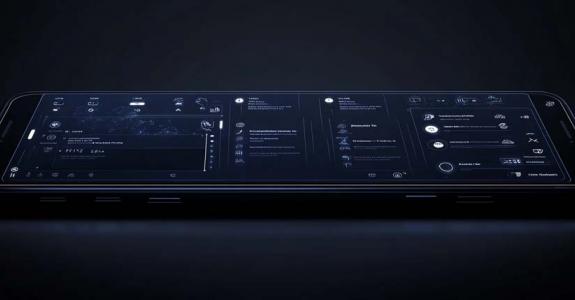[PLUS An Introduction to check if they’ve hit the spot with 2018’s Tech Predictions]
As each year draws to a close, global research and advisory firm Gartner release an annual list of strategic technology trends that they predict will shape the tech world for 2019.
In our experience, they have an impressive hit rate, but they’re also not always 100% accurate. And as it’s the start of a new year, it seems like the perfect time to take a look back at last year’s predictions and to see what they believe is in store for the future. Let’s get started.
2018 Flashback: Strategic Technology Trends by Gartner
1. AI Foundation

WERE THEY CORRECT?: Yes.
2018 was widely heralded as the year of AI, and Gartner wasn’t the only organization to predict that AI would take off and start to see mainstream adoption. It’s true that we’re still in the early days of artificial intelligence, but 2018 witnessed a huge surge of interest in AI and an impressive $2 billion of global spending.
2. Intelligent Apps and Analytics
WERE THEY CORRECT?: Yes.
This builds upon the last point because intelligent apps and analytics require some form of AI to power them. Gartner predicted that we’d see an increase in the number of apps that use unobtrusive AI to power them, and while it’s difficult to tell exactly how many apps are using AI and its related technologies, it’s a safe bet that there was an explosion of growth last year that’s set to continue.
3. Intelligent Things

WERE THEY CORRECT?: Yes.
Gartner says, “Some intelligent things wouldn’t exist without AI, but others are existing things (i.e. a camera) that AI makes intelligent (i.e. a smart camera). This one’s arguably the easiest trend to verify because it seems like almost everyone owns a Google Home or an Amazon Echo these days. And that’s without getting started on smart cars, thermostats, smart homes, fridges and more.
4. Cloud to the Edge
WERE THEY CORRECT?: Almost.
Edge computing is a rival to cloud computing “in which information processing and content collection and delivery are placed closer to the sources of this information”. The goal is to improve latency and to reduce connectivity problems. Gartner predicted that in 2018, we’d see a widespread shift from cloud computing to edge computing, and while we did see some movement in that direction, we’re not quite there yet.
5. Digital Twins

WERE THEY CORRECT?: Umm...not quite.
Digital twins are essentially digital representations of real-world systems, such as virtual cities that show traffic data in real-time and which allow for smarter decision making. We’ve taken steps in the right direction, but we’re still a long way from the full potential that digital twins have to offer. Let’s see what 2019 has for it.
6. Conversational Platforms
WERE THEY CORRECT?: Definitely. Yes.
Chatbots are increasingly popular, and not just amongst the younger generation. When you combine our increasing usage of chatbots with the rise of home assistant devices, it becomes pretty clear that 2018 saw a huge rise in the number of conversational platforms and that the trend will continue to gather steam in the coming years.
7. Immersive Experiences
WERE THEY CORRECT?: Yes, to an extent.
Augmented reality (AR), virtual reality (VR) and mixed reality (MR) have all helped to drive interest in immersive experiences, and app developers have been quick to jump on the bandwagon. We’re yet to see the next Pokémon Go and even the most immersive experiences could use some improvement. Still, there’s no doubt that 2018 was a good year for AR and VR.
8. Blockchain

WERE THEY CORRECT?: It’s a huge trend!
The challenge with evaluating blockchain’s uptake is that it usually sits under the hood and so it’s not always easy to tell whether it’s being used (unless the company reveals the Blockchain stands behind their solution). Still, whether 2018 was the year of Blockchain or not, it’s pretty clear that the technology is here to stay, and not just for cryptocurrencies. It has huge potential across any industry from agriculture to banking and investment.
9. Event-Driven
WERE THEY CORRECT?: Yes
The idea here is to understand when some state has changed, such as the completion of a purchase order. 2018 saw event-driven business taken to the next level thanks to everything from CRM systems to AI-based business tools that can identify more subtle state changes that human analysts might not have been aware of.
10. Continuous Adaptive Risk and Trust Assessment
WERE THEY CORRECT?: Yes
“Continuous adaptive risk and trust assessment (CARTA) allows for real-time, risk and trust-based decision making with adaptive responses to security-enabled digital business,” Gartner says. While not everyone is on board, 2018 saw a huge shift in this direction thanks to the insane amounts of data that we’re creating.
2019 Strategic Technology Trends
1. Autonomous Things

DO WE AGREE?: Yes
Gartner explains that autonomous things use AI to perform tasks that are traditionally done by humans and that they can be categorized as robotics, vehicles, drones, appliances or agents. Even if one category doesn’t take off in 2019, you can bet your boots that the other four will.
2. Augmented Analytics
DO WE AGREE?: Yes
Gartner predicts that by 2020, more than 40% of data science tasks will be automated. It makes sense because we’re already drowning in data, and technology could be the tool we need to throw us a flotation device. AI can process more data faster and also identify insights that humans might miss.
3. AI-Driven Development

DO WE AGREE?: Well, not in 2019, but soon.
AI is already being used to write music and news articles, and so it seems logical that it will also be used for software development in the near future. We think that 2019 might be a little optimistic, but we do think it can only be a matter of time.
4. Digital Twins
DO WE AGREE?: Maybe 2019, but 2020 is more likely.
Gartner predicted digital twins in 2018 as well, but we’re yet to see them receive any real mainstream adoption. We’re close though, and if we don’t see true digital twins in 2019 then we can expect to see them in 2020 and beyond. Watch this space!
5. Empowered Edge

DO WE AGREE?: Yes.
Building on from 2018’s slow but steady shift towards edge computing, Gartner predicts that 2019 will witness empowered edge technology that “will connect people with hundreds of edge devices”. If they’d said millions, we might have disagreed. As it is, we’re moving in the right direction and an empowered edge seems achievable within the next twelve months.
6. Immersive Technologies
DO WE AGREE?: Yes.
This is another trend that Gartner included in the 2018 report, and we’d argue that we’re already pretty much there. Immersive technologies already exist, but we can expect them to continue to get better in quality and to witness increasing uptake in 2019. Gartner says that by 2022, 70% of enterprises will be experimenting with immersive technologies.
7. Blockchain
DO WE AGREE?: Yes.
The blockchain is a huge trend already, and whether we can measure its uptake directly or not, it’s pretty clear that it’s going to continue to be a hot topic in 2019 and beyond. Because the technology is so new, it’s likely that this will be the year in which we start to see innovative new applications for blockchain that show its true potential.
8. Smart Spaces

DO WE AGREE?: Yes
This is a no-brainer. People are already using tools like smart thermostats to help to regulate their living environments, and as the Internet of things continues to grow, we’ll find more and more ways to digitize our physical spaces and to use technology to manage our living and working environments.
9. Digital Ethics and Privacy
DO WE AGREE?: Definitely.
If the EU’s introduction of the General Data Protection Regulation (GDPR) taught us anything in 2018, it’s that privacy and data security is more important than ever before. We can expect to see more and more discussions around the way that our data is handled and increasing scrutiny from both regulators and the general public.
10. Quantum Computing
DO WE AGREE?: Not for another 3-5 years.
“Quantum computing is a type of non-classical computing that is based on the quantum state of subatomic particles,” Gartner explains. “While a classic computer would read every book in a library in a linear fashion, a quantum computer would read all the books simultaneously. Quantum computers are able to theoretically work on millions of computations at once.” The technology already exists, but we expect it’ll be a while before quantum computers are commercially available.
What’s Next?

If you want to stay ahead of the competition in the business world, you need to keep an eye on the latest trends and to get to know how they could impact your industry. Gartner’s trends lists are a great place to get started, but you’ll need to keep reading and learning throughout the rest of the year if you want to stay on top. That’s where we come in. And well, reading is good, but doing is better.
Still need help grasping new technologies? There’s no need to suffer in silence. Here at Zfort Group, we do tech so you don’t have to. So if you’re ready to improve your product’s time to market with a partner you can trust, be sure to get in touch with us to find out more!





